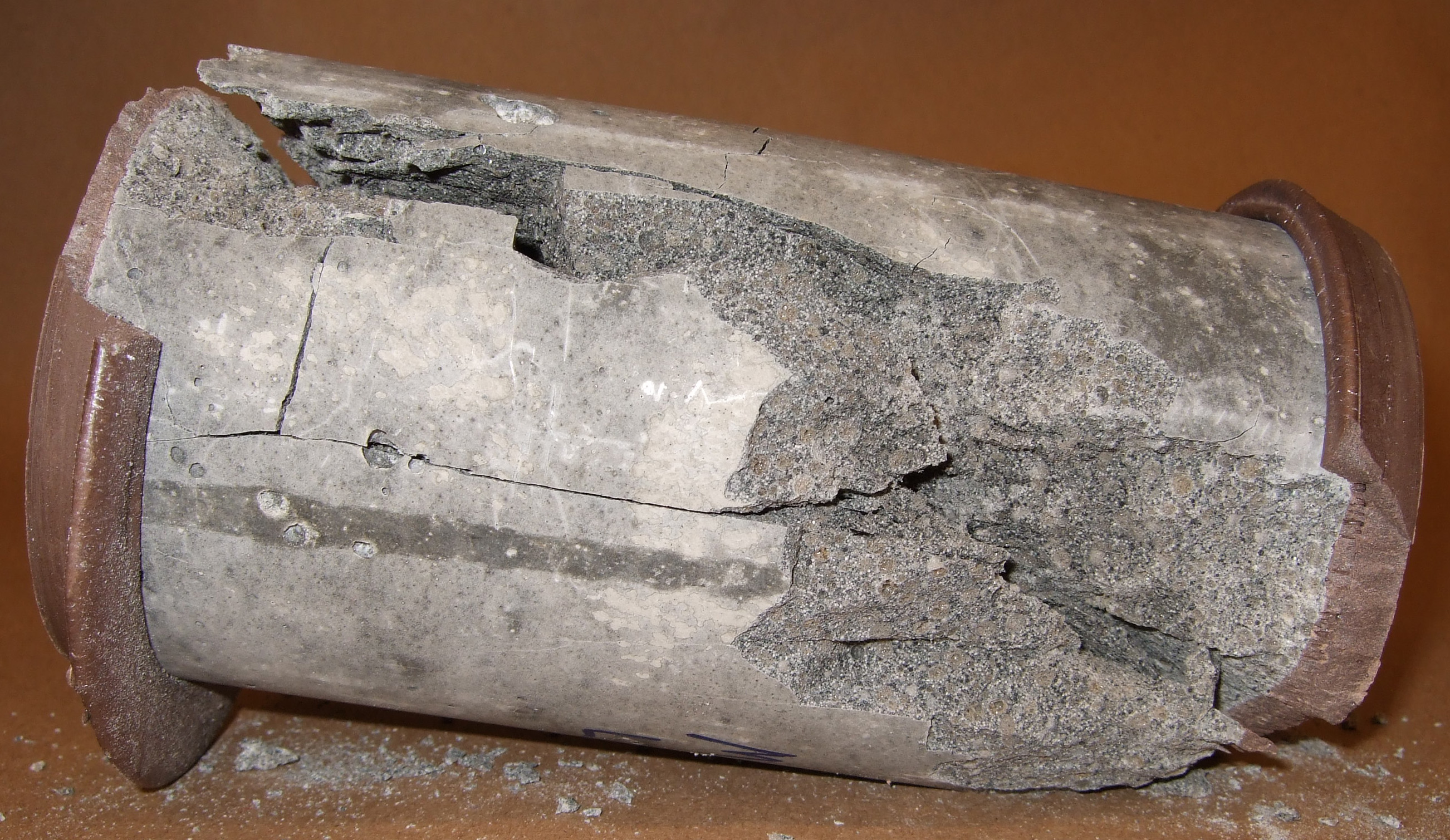Difference between revisions of "User:Shawndouglas/sandbox/sublevel14"
Shawndouglas (talk | contribs) Tag: Reverted |
Shawndouglas (talk | contribs) Tags: Reverted Visual edit: Switched |
||
| Line 18: | Line 18: | ||
===Construction and geotechnical testing=== | ===Construction and geotechnical testing=== | ||
From | From concrete and asphalt to construction site substrates like clay and rock, the proper quality and characterization of construction and engineering materials is critical to a construction project's long-term success. The importance of perfecting and using quality construction materials dates back millennia, for example to the Romans and their refinement of concrete recipes and production using pozzolanic and quicklime materials.<ref name="ChandlerRiddle23">{{cite web |url=https://news.mit.edu/2023/roman-concrete-durability-lime-casts-0106 |title=Riddle solved: Why was Roman concrete so durable? |author=Chandler, D.L. |work=MIT News |publisher=Massachusetts Institute of Technology |date=06 January 2023 |accessdate=15 November 2023}}</ref> Even today, we learn that some sand types such as desert sand are inadequate for direct use in modern concrete due to their negative contribution to the necessary compressive strength of the concrete.<ref>{{Cite journal |last=Akhtar |first=Mohammad Nadeem |last2=Jameel |first2=Mohammed |last3=Ibrahim |first3=Zainah |last4=Muhamad Bunnori |first4=N. |last5=Bani-Hani |first5=Khaldoon A. |date=2023-06 |title=Development of sustainable modified sand concrete: An experimental study |url=https://linkinghub.elsevier.com/retrieve/pii/S2090447923002204 |journal=Ain Shams Engineering Journal |language=en |pages=102331 |doi=10.1016/j.asej.2023.102331}}</ref> Should a contractor attempt a financial shortcut by using cheaper, less appropriate sand in their concrete mixes, future maintenance costs may go up at the least, or lives may be lost in a structural collapse at the worst. | ||
Similarly, the element of what is found and to be put under a construction site is also important. In this case, a sub-branch of materials testing is introduced in the form of geotechnical testing (or geotechnical investigation). With this kind of testing, the soil and rock is examined for load-bearing and seismic (i.e., engineering) properties to ensure any proposed structure can securely and durationally last over a specified period of time.<ref name="PatelGeo19">{{Citation |last=Patel |first=Anjan |date=2019 |title=Geotechnical investigation |url=https://linkinghub.elsevier.com/retrieve/pii/B9780128170489000093 |work=Geotechnical Investigations and Improvement of Ground Conditions |language=en |publisher=Elsevier |pages=87–155 |doi=10.1016/b978-0-12-817048-9.00009-3 |isbn=978-0-12-817048-9 |accessdate=2023-11-15}}</ref> | |||
===Why is laboratory testing of construction and earth materials important?=== | ===Why is laboratory testing of construction and earth materials important?=== | ||
In the case of geotechnical investigation, costs for ground improvement and overall construction can be reduced, as can the chance for future disputes, with proper laboratory and ''in situ''' testing.<ref name="PatelGeo19" /> | |||
==Conclusion== | ==Conclusion== | ||
Revision as of 17:25, 15 November 2023
|
|
This is sublevel14 of my sandbox, where I play with features and test MediaWiki code. If you wish to leave a comment for me, please see my discussion page instead. |
Sandbox begins below
Title: What is the importance of a construction and engineering laboratory to society?
Author for citation: Shawn E. Douglas
License for content: Creative Commons Attribution-ShareAlike 4.0 International
Publication date: November 2023
Construction and geotechnical testing
From concrete and asphalt to construction site substrates like clay and rock, the proper quality and characterization of construction and engineering materials is critical to a construction project's long-term success. The importance of perfecting and using quality construction materials dates back millennia, for example to the Romans and their refinement of concrete recipes and production using pozzolanic and quicklime materials.[1] Even today, we learn that some sand types such as desert sand are inadequate for direct use in modern concrete due to their negative contribution to the necessary compressive strength of the concrete.[2] Should a contractor attempt a financial shortcut by using cheaper, less appropriate sand in their concrete mixes, future maintenance costs may go up at the least, or lives may be lost in a structural collapse at the worst.
Similarly, the element of what is found and to be put under a construction site is also important. In this case, a sub-branch of materials testing is introduced in the form of geotechnical testing (or geotechnical investigation). With this kind of testing, the soil and rock is examined for load-bearing and seismic (i.e., engineering) properties to ensure any proposed structure can securely and durationally last over a specified period of time.[3]
Why is laboratory testing of construction and earth materials important?
In the case of geotechnical investigation, costs for ground improvement and overall construction can be reduced, as can the chance for future disputes, with proper laboratory and in situ' testing.[3]
Conclusion
References
- ↑ Chandler, D.L. (6 January 2023). "Riddle solved: Why was Roman concrete so durable?". MIT News. Massachusetts Institute of Technology. https://news.mit.edu/2023/roman-concrete-durability-lime-casts-0106. Retrieved 15 November 2023.
- ↑ Akhtar, Mohammad Nadeem; Jameel, Mohammed; Ibrahim, Zainah; Muhamad Bunnori, N.; Bani-Hani, Khaldoon A. (1 June 2023). "Development of sustainable modified sand concrete: An experimental study" (in en). Ain Shams Engineering Journal: 102331. doi:10.1016/j.asej.2023.102331. https://linkinghub.elsevier.com/retrieve/pii/S2090447923002204.
- ↑ 3.0 3.1 Patel, Anjan (2019), "Geotechnical investigation" (in en), Geotechnical Investigations and Improvement of Ground Conditions (Elsevier): 87–155, doi:10.1016/b978-0-12-817048-9.00009-3, ISBN 978-0-12-817048-9, https://linkinghub.elsevier.com/retrieve/pii/B9780128170489000093. Retrieved 2023-11-15










